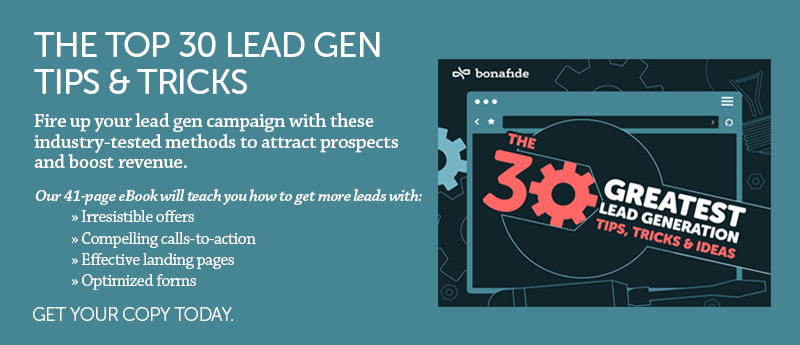
Your digital marketing strategy should never be left to chance. With so many businesses cropping up left and right with innovative new products, it can be an uphill battle for even the savviest of marketers to get noticed and drive revenue online. But here’s the good news: by taking stock of what’s working and what’s not, you can develop a digital marketing strategy that drives prospects straight into your marketing funnel.
You might ask - what’s this funnel and how can you create and implement actionable steps that drive the end result of conversions?
What is the marketing funnel?
Also called the conversion funnel, your marketing funnel is the process that takes prospects from awareness to conversion. Though your marketing funnel can have a variety of steps based on individual preference and customizations, it can also be broken down into three simple stages.
Top of Funnel (TOFU) – Awareness
At this stage, a company’s goal is to capture your prospects’ attention. Needless to say, visibility is important and it can be attained by a variety of paid and organic tactics that generate a buzz. These tactics include PR, social engagement, SEO, direct marketing, and social paid ads.
Middle of Funnel (MOFU) – Consideration
Consideration is a weighty section. It can be further broken down into trust and desire. These middle levels are reached when prospects become aware of their problems and recognize that a solution exists. They don’t yet know what the solution is, but they're in research mode to find the answer. Engaging with your prospects through email newsletters, retargeting tools, and solid content can make all the difference in driving them to the next stage: conversion.
Bottom of Funnel (BOFU) – Decision (or conversion)
People in the bottom of the funnel want what you have to sell. They’re convinced you can provide a solution, but may not be ready to make the commitment. They’ve visited your site multiple times and are looking for a reason—a final push—to make the leap to customer. This is arguably the easiest part of the funnel, but don’t let that be an excuse to drop the ball in the end zone. You still need to give prospects enough attention to lead them toward the end.
start defining your marketing funnel
Your digital marketing strategy should be tailored for users at every stage of the marketing funnel. When defining your marketing funnel, you should never begin with a 'what.' You already know what you are doing—generating sales, building the best products, etc. Instead, ask “why” to intelligently inform your strategy in a way that drives results. Think about who you are, who your audience is, and your unique mission and value proposition.
People don’t just fall into your marketing funnel from the sky. After you outline why your company exists and understand its unique place in your customers’ lives, it’s time to create content that silently leads them into your marketing funnel. Effective content is both authentic and connects with your audience in the ways they care about, by adding value to their lives. This is key to your digital marketing strategy.
lead prospects through the funnel
The number one search goal of every website should be to make it to the first page (preferably the top 5 results) of search results for a given keyword. Studies reveal that 71.33% of searches resulted in page 1 Google organic clicks. Page 2 and 3 receive 5.9% or less of clicks. That means if you aren’t optimizing your page to bring it out of the shadows, you are losing visibility and conversions faster than you can say, “It’s time to optimize.”
When it comes to optimizing your site and content to increase search rankings and good old-fashioned findability, it’s important to utilize a combination of paid (like pay-per-click—PPC) and organic search tactics (SEO).
But let’s step back and start with the basics. What is SEO, anyway? It’s a powerful combination of techniques and tactics that boost the number of visitors on your website via that ever-elusive high rank on a search engine’s results page. PPC, on the other hand, accounts for about 62% of global search clicks and is a key tool for buying website visits. The key, of course, is to use both PPC and SEO to maximize your results.
Optimizing your content organically
SEO depends on short- and long-tailed keywords that reflect what prospects are searching for. This is called organic search because customers are already searching for those specific terms. When incorporated comprehensively into your web content strategy, the keywords form a path to your content. Keywords are especially important in the early and middle phases of the funnel, as they generate awareness and provide the critical answers to prospects’ evaluations.
Paying for an audience
PPC, on the other hand, requires you to pay for your audience. Google will list your relevant PPC ads alongside top-ranking organic search ads and charge you as prospects click on your link. If not segmented properly based on your targeted audience and/or if your search terms are too broad or popular, it could backfire by generating a lot of traffic that just isn’t interested. This can get expensive. For PPC, niche segmentation and keywords are imperative to reaching your most specific, valuable audiences.
Bringing it together
When used together, PPC and SEO become a powerhouse for driving your search engine rankings. By providing additional clout through multiple results for your website on a search page, it gives a sense of trust and authority that customers crave. By utilizing the highest converting keywords for both campaigns, you can glean more data about your customers’ behaviors to drive present and future campaigns. Although they typically account for fewer clicks, PPC ads provide relevant data that can inform your use of title tags, meta descriptions and additional site content to generate that elusive higher ranking. Not only that, they excel at providing immediate data in contrast to the longer organic searches data acquisition which enable you to refine your organic keyword strategy. Sure, you can have one without the other—but all things considered, why not have both?
What about social media?
Social media advertising is a booming space with a track record for driving users to action. Within 10 years of Facebook’s first advertising option launch, social media advertising revenue was up to $8.4 billion—and it’s still growing. Banner ads are archaic and sometimes PPC keywords are out of your marketing budget. Social advertising enables highly targeted ads to go out to specific groups or demographics on sites like Facebook, LinkedIn, and YouTube. With precision, this type of advertising hones in on the groups you actually care about and is an important tactic for bringing prospects into your company’s marketing funnel.
Savvy marketers use these tactics
SEO
SEO content drives organic traffic to your site. It’s grown to include a variety of mediums and channels for an integrated digital marketing campaign. In war and in business, it’s crucial to know your opponent. Research what your competition is doing, as well as what’s working, to pave the way for your own success. Though trial and error is often a great teacher, the wise learn by studying the success of others—and use that to streamline their own results.
PPC advertising (Adwords)
Successful SEO campaigns work in conjunction with pay-per-click AdWords. It takes time to understand the behavioral landscape of organic user clicks. PPC ads provide targeted and nearly immediate, actionable insights. When selecting keywords, users should identify their existing resources and budget to see how they can maximize their spend. Rather than selecting expensive, competitive keywords and paying for clicks from untargeted users, choose more niche keywords that only true seekers of your services will discover.
Social media advertising
Segmentation focuses on groups of people and their behavior, and how it connects to every other behavior. It provides a focused view of data and performance. Social media advertising maximizes marketing spend through a highly-targeted approach to PPC ads that aren’t keyword specific, but rather user specific.
Keyword research
Keyword research gives you a direct look at the most popular search terms at every stage of the marketing funnel. By selecting the right keywords for your digital marketing strategy, you can more effectively promote your SEO content. Google AdWords is great for short-tail keywords. For longer-tailed phrases, try Answer the Public, Infinite Google Suggest, or UberSuggest.
Strategic filtering and building campaigns
Developing your digital marketing and SEO campaigns can be overwhelming if you don’t properly segment your audience. Using filters to tap into what your audience cares about at every stage of the marketing funnel, you can streamline and forecast lead qualification. That sounds like a winning strategy right there.
Link-building
Link-building has a major impact on the success of your campaign. It helps drive organic action and creates a sense of trust among prospects. If reputable, compelling content links back to your site, prospects will see you as an authority. But don’t wait for your contacts to come to you. Instead, find places online where you can connect at every stage, and draw them in with keywords and landing links.
Your mission
If you want to effectively lead your prospects from the top of your marketing funnel and across the finish line, it’s going to take some strategic planning. But every marketing strategy begins with knowing where you’re going. By taking the time to understand your marketing funnel now, you’ll save major time and marketing spend in the future. So, savvy marketer, what are you waiting for?



